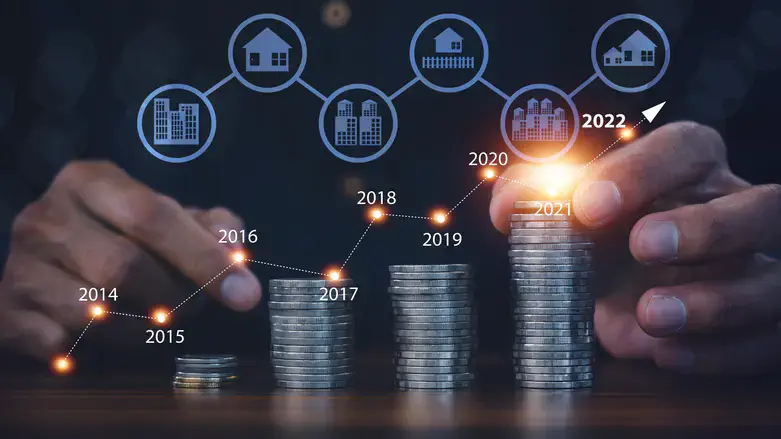
Venturing into the world of cryptocurrencies can feel like navigating uncharted waters. I remember the thrill of making my first crypto investment, watching the numbers dance across the screen with a mix of excitement and trepidation. As the market evolved, I realized the importance of strategy in managing my assets effectively. That's where crypto portfolio optimization comes into play.
Optimizing a crypto portfolio isn't just about diversifying investments; it's a meticulous process of balancing risk and reward to maximize returns. By leveraging data-driven insights and strategic asset allocation, I discovered how to fine-tune my portfolio to align with my financial goals. This approach not only enhances potential gains but also mitigates the inherent volatility of the crypto market.
In this article, I'll delve into the strategies and tools that can transform a crypto portfolio from a mere collection of assets into a well-oiled investment machine. Let's explore the art of crypto portfolio optimization together.
Key Takeaways
- Understanding Crypto Portfolio Optimisation: Optimising a crypto portfolio involves strategic asset allocation and data-driven insights to balance risk and maximize returns in the volatile cryptocurrency market.
- Importance of Diversification: Diversifying investments across different cryptocurrencies significantly reduces risk and aligns with investment objectives, enhancing potential returns despite market fluctuations.
- Analyzing Market Trends: Employing both technical and fundamental analysis aids in making informed investment decisions by understanding price movements and the intrinsic value of cryptocurrencies.
- Balancing Risk and Reward: A balanced portfolio includes a mix of high-volatility assets and stablecoins or low-risk investments, aiming for growth while managing risk effectively.
- Monitoring and Rebalancing Strategies: Regularly reviewing and adjusting your portfolio ensures alignment with financial goals, optimizing performance, and enhancing responsiveness to market changes.
- Utilizing Technological Tools: Advanced tools such as portfolio trackers and algorithmic trading enhance investment strategies by providing real-time insights and automating trades to improve decision-making efficiency.
Understanding Crypto Portfolio Optimisation
Exploring crypto portfolio optimization revealed its critical role in managing investments. I found it eye-opening how data-driven insights and strategic allocation can transform a portfolio.
Importance of Crypto Portfolio Optimisation
Crypto portfolio optimization is essential in a market that shifts often. I realized that without it, my investments would be exposed to unnecessary risk. The right methods help in balancing risk, ensuring that returns are maximized over time. Seeing improved positions, I appreciated its significance.
Key Principles of Portfolio Management
Diversification stands out in portfolio management. I learned that spreading investments across different assets can reduce risk considerably. Risk management is equally crucial. Employing strategies like the mean-variance model helped me maintain balance, ensuring rewards are maximized.
Assessing Your Investment Goals
Balancing crypto investments requires understanding my goals. I consider long-term growth or short-term gains based on my horizon. Are higher risks for potential rewards right for me? These questions guide my portfolio strategy.
Defining Investment Objectives
I define my investment objectives by specifying what I want to achieve. Maximizing returns at a certain risk level is a goal. For example, increasing my portfolio by 15% annually. These objectives help me focus and measure progress. Clear and concise objectives are vital for successful investing.
Evaluating Risk Tolerance
Understanding my risk tolerance is essential. Am I comfortable with potential losses in search of profits? I assess my ability to handle market fluctuations emotionally and financially. This awareness helps me select assets that align with my risk appetite. Adjusting as my situation changes keeps my strategy robust.
Diversifying Your Crypto Portfolio
Diversification in my crypto holdings has been invaluable. By spreading my investments, I've not only minimized risks but also seized numerous opportunities for profit.
Benefits of Diversification
Diversification protects my investments from significant losses. By holding a variety of cryptocurrencies, I've lessened the impact of market swings. This approach balances my portfolio and aligns with my investment objectives. I've found that diversification almost always maximizes my returns over time. By balancing this, I mitigate extreme volatility by having stable assets. As a result, my portfolio maintains consistent performance, even when individual assets underperform.
Selecting Complementary Assets
Choosing the right mix of assets involves strategic thinking. I focus on a blend of well-established coins like Bitcoin and promising altcoins that match my risk tolerance and goals. Tools like CoinMarketCap help me research and select complementary assets. Alternative sectors, such as DeFi and NFTs, offer additional diversification. These tools have helped me craft a balanced portfolio that aligns with my risk profile.
Analysing Market Trends
Understanding market trends in crypto investing is essential for informed decisions. By examining trends, I manage risk and maximize returns effectively.
Utilizing Technical Analysis
I use technical analysis to forecast cryptocurrency price movements. Analyzing historical data, charts, and patterns provides insights into market sentiment and potential future trends. For instance, I rely on indicators like moving averages and RSI to identify entry and exit points. This method helps me anticipate volatility and strategize accordingly. It’s a dynamic approach that sharpens my investment strategies, ensuring I remain responsive to market shifts. Through this, I feel empowered to make timely decisions that align with my financial objectives.
Leveraging Fundamental Analysis
Leveraging fundamental analysis involves evaluating the intrinsic value of a cryptocurrency. I review factors like the team behind a project, their roadmap, and real-world applications. By understanding a coin's fundamentals, I assess its long-term potential and ROI. This approach encourages thorough research before investing. For example, analyzing a coin's market demand aids me in assessing sustainability. By focusing on fundamentals, I align my crypto choices with informed predictions, enhancing my confidence in long-term investments. This strategy not only supports my risk management but also brings a rewarding sense of assurance in my portfolio’s growth direction.
Balancing Risk and Reward
Crypto portfolio optimization helps balance risk and reward. It maximizes returns by carefully managing risk levels.
Identifying High-Volatility Assets
Spotting high-volatility assets in my crypto portfolio is essential. Many altcoins can swing wildly in value. They promise massive returns but carry significant risks. I often research altcoin market movements. I consider both their potential and danger. Altcoins might offer gains, but stability matters too. Understanding volatility can protect against unexpected losses.
Incorporating Stablecoins and Low-Risk Investments
I use stablecoins to stabilize my portfolio. They link to fiat currencies and offer less volatility. Diversifying with low-risk investments improves my strategy. I include established cryptocurrencies like Bitcoin and Ethereum. Combining stable and promising assets helps maintain balance. This strategy supports growth with reduced risk potential.
Monitoring and Rebalancing Your Portfolio
Crafting a successful crypto portfolio requires constant vigilance. I've found that sticking to a clear monitoring and rebalancing strategy has transformed my investment journey.
Setting Regular Review Intervals
I set consistent intervals to review my holdings. Regular checks ensure my portfolio aligns with my financial goals. I often opt for monthly reviews. This cadence helps track market changes efficiently. With each review, I reassess my asset allocations. By following this disciplined approach, I’ve noticed improved decision-making and agility in responding to market shifts. The routine strengthens my understanding of asset performance and adapts to my evolving investment strategy.
Strategically Reallocating Assets
Strategic reallocation keeps my portfolio nimble. I analyze performance data to decide on asset shifts. This might mean increasing holdings in promising sectors. It could involve reducing exposure to underperformers. Through careful reallocation, I capitalize on growth opportunities. At times, I've shifted funds from volatile altcoins to stabilize returns. This method bolsters my portfolio’s resilience against adverse market conditions. Rebalancing is crucial for maximizing portfolio potential while maintaining risk at comfortable levels.
Utilizing Tools and Technology for Optimisation
Optimizing my crypto portfolio has been indispensable. Advanced tools and technologies drive my decision-making, guiding my strategies to balance risks and rewards.
Exploring Crypto Portfolio Trackers
Portfolio trackers revolutionize how I manage my investments. With tools like Blockfolio and Delta, I monitor market movements closely. These apps provide comprehensive tracking of diverse assets, enabling me to understand my portfolio's health at a glance. The ease of syncing various platforms and viewing real-time data keeps me informed and ready to tackle market shifts. Detailed insights help identify trends and act swiftly to avoid losses.
Implementing Algorithmic Trading
Algorithmic trading amplifies my crypto strategy. I rely on bots like Pionex and 3Commas to automate trades on predetermined parameters. Automated trading assists me in capturing market opportunities, and executing complex strategies without constant monitoring. These algorithms work tirelessly, enhancing my portfolio's performance and mitigating emotional trading bias. I set specific buy and sell points, ensuring consistency and reacting promptly. The precision and speed attained provide a strategic edge in a volatile market.
Conclusion
Optimizing a crypto portfolio is an ongoing journey that demands diligence and adaptability. By employing strategic asset allocation and leveraging advanced tools, I've been able to navigate the complexities of the crypto market with greater confidence. Diversification, risk management, and regular portfolio reviews have proven invaluable in achieving my investment goals. As the market continues to evolve, staying informed and responsive to trends is crucial. Embracing both fundamental and technical analysis has allowed me to make informed decisions that align with my financial objectives. Ultimately, a well-optimized portfolio not only maximizes returns but also provides a robust defense against market volatility.
